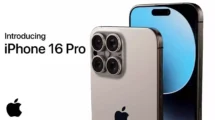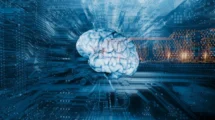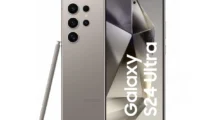As businesses and nations promised themselves to soar to greater heights of development at the beginning of 2020, no one could predict that a disease would conquer the entire globe and put all activities on a standstill. Coronavirus disease (COVID-19), a pandemic declared by the World Health Organization (WHO) has claimed numerous lives globally causing a death toll of 1,33,873 (as per WHO). Worldwide new cases of COVID-19 are increasing at an exponential rate, making it intractable. At times like these, nations that lack the adequate medical infrastructure to cope with the pandemic are using technology to arrest it. In situations like these, where the impact is on a larger scale, technology and medicine can work in tandem to be beneficial to the masses by fighting misinformation, educating, and empowering the individuals who are battling this crisis on the frontline. Here are a few areas where technology is aiding in the COVID-19 management-
Unmanned Vehicles And Drone Technology
In a global crisis like this, where maintaining social distancing is of paramount importance, China is using unmanned vehicles to deliver medicines and food to the isolated wards, sterilize hospitals and deliver essentials to the common people in. In Maharashtra, where COVID-19 cases are high, the state police are using drone technology and data analytics to monitor the movement of people in highly crowded places. Every district is under surveillance by two to three drones to keep an eye on the activities in the street.
Mobile Applications With Bluetooth Technology
Traditional disease tracing methods are failing to keep up with the pace of the pandemic. Hence, to trace the symptoms at a primary level many countries like India and UK have come with health applications working with Bluetooth technology that determine and alert a user if they have been close to an infected individual or location within six feet of proximity. The platform allows the users for self-diagnosis by asking a set of questions. In case symptoms match those of the disease the app will advise you to visit the nearest clinic, they also have a chatbot that can address your worries. If a person has been in contact with someone experiencing symptoms for an extended period then a yellow alert will be sent. If tested positive they can update their status in the app following which a code will be generated to be sent to a central database. The next user who downloads the app will be able to find out who has been infected thus sending a signal of red alert.
Predictive Analysis Using Machine Learning
Many organizations have developed a COVID-19 dashboard using machine learning to provide the latest updates on the outbreak and predictive analysis to predict the progression of the disease. These dashboards give detailed information about the total number of confirmed and suspected cases across the globe along with the number of deaths and recoveries. The data taken by the dashboard is in collaboration with the WHO and other reputed health organizations. It enables researchers to gain new insights and new case studies with an accuracy in forecasting to address the outbreak.
Temperature Monitoring
Wireless thermometer guns and other infrared body temperature measuring devices are used to detect any deviation from the normal body temperature and can identify if any individuals need any further investigation. These devices are fixed in checkpoints where there is high human movement e.g. airports, offices, hotels, hospitals, train stations, shops, and other public places.
Facial Recognition
This technology can recognize people even if they are masked. Facial recognition technologies can help in monitoring movement and can track people who are quarantined, apart from the recognition they can also keep a tab on individuals if they have been in contact with an infected person and find out if they break rules and step out despite being quarantined.
Remote Healthcare
Since the incubation of this virus is up to 14 days, there is a dire need to speed up the testing for the infection. Analysis of behavioral and biometric data from wearable devices improves the accuracy of detecting the positive cases of COVID-19. Maintaining social distancing being the primary concern, public health experts are also using telemedicine and telenursing applications. These platforms allow doctors and patients to remotely interact and seek medical advice via online conversational interfaces and digital medical assistance. After it is found that an individual is carrying symptoms of the disease, a missed call is given on the healthcare number. An executive then collects the details of the patient and a doctor is assigned who will respond through audio or video conferencing to prescribe the medicines and tests required through SMS. Through this facility, medicine delivery can be availed by other patients as well.
While there’s no doubt that the effects of the pandemic are unprecedented and have left us all at a loss, there’s nothing to say that we can’t find a solution to it. More so, when technology is evolving rapidly, despite everything! This too shall pass and we shall all emerge out of it healthier, wiser, and stronger.
-By Shomiron Dasgupta , CEO, DNIF –Next Gen SIEM
Shomiron, a TedX speaker, is also an eminent speaker at many industry events including DSCI (Data Security Council of India) and SACON (TheSecurity Architecture Conference). He is an alumnus of St. Xavier’s college. Outside the tech world, he is a trained mountaineer with expedition experience in the high Himalayas.





